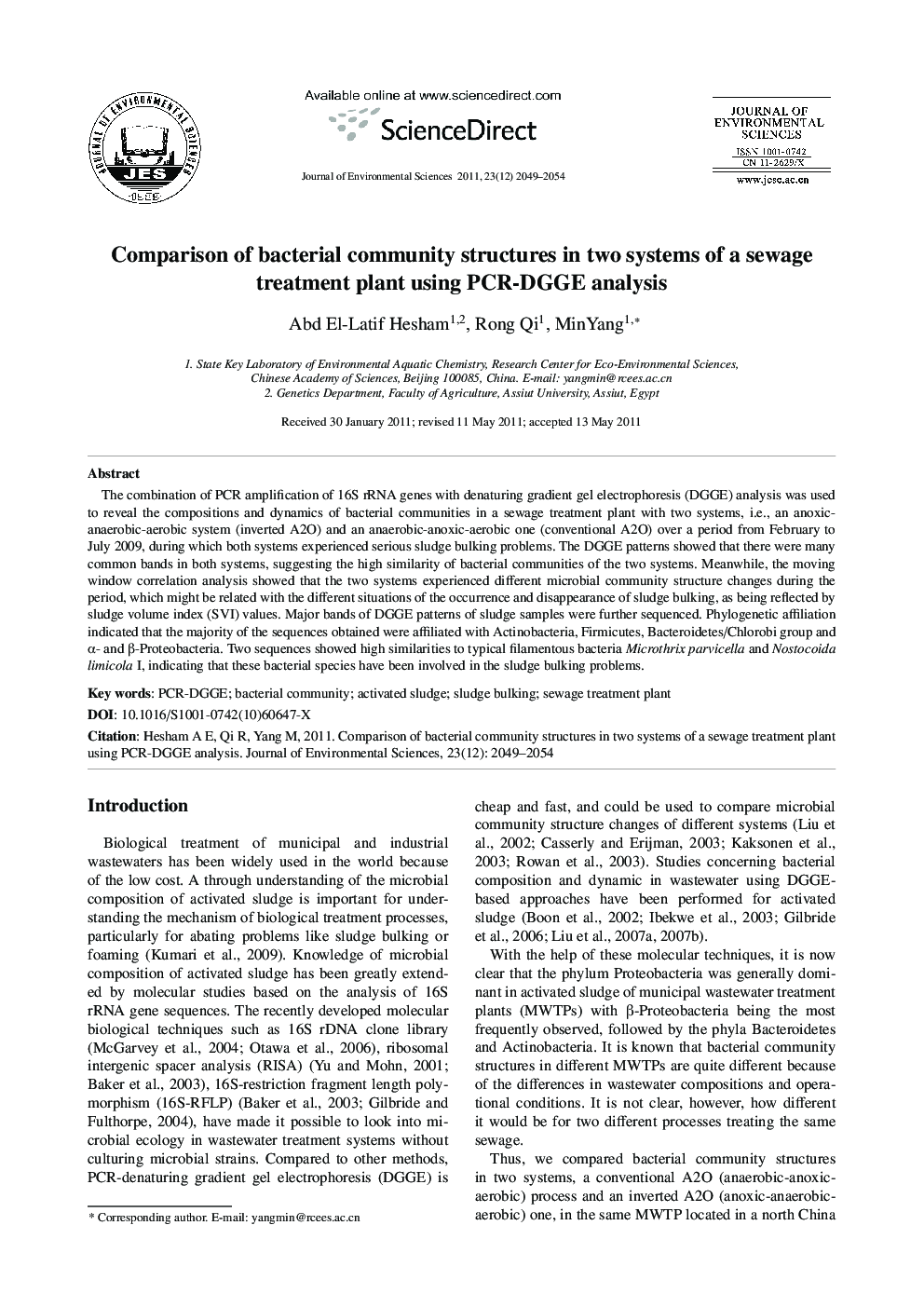| Article ID | Journal | Published Year | Pages | File Type |
|---|---|---|---|---|
| 4455172 | Journal of Environmental Sciences | 2011 | 6 Pages |
The combination of PCR amplification of 16S rRNA genes with denaturing gradient gel electrophoresis (DGGE) analysis was used to reveal the compositions and dynamics of bacterial communities in a sewage treatment plant with two systems, i.e., an anoxic-anaerobic-aerobic system (inverted A2O) and an anaerobic-anoxic-aerobic one (conventional A2O) over a period from February to July 2009, during which both systems experienced serious sludge bulking problems. The DGGE patterns showed that there were many common bands in both systems, suggesting the high similarity of bacterial communities of the two systems. Meanwhile, the moving window correlation analysis showed that the two systems experienced different microbial community structure changes during the period, which might be related with the different situations of the occurrence and disappearance of sludge bulking, as being reflected by sludge volume index (SVI) values. Major bands of DGGE patterns of sludge samples were further sequenced. Phylogenetic affiliation indicated that the majority of the sequences obtained were affiliated with Actinobacteria, Firmicutes, Bacteroidetes/Chlorobi group and α- and β-Proteobacteria. Two sequences showed high similarities to typical filamentous bacteria Microthrix parvicella and Nostocoida limicola I, indicating that these bacterial species have been involved in the sludge bulking problems.
